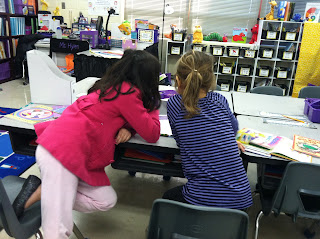According to McKenna and Kear (1990), suggests measuring classroom averages from the beginning to the end of the school year to determine growth and progress of a group of students. However they do not encourage comaring individual students growth from beginning to end. They state, "the pre/post difference would, in general, need to be 5 points or more on either the academic or recreational subscale before any real change coudld be assumed. On the total score, the pre/post difference would, in general, be 7 or 8 points." (McKenna and Kear, 1990).
My Data:
- Individual Students:
- Sam's recreational reading score improved from 26 to 31 (5pts)
- Amanda's recreational reading score improved from 26 to 31 (5pts)
- Amanda's total reading attitude score improved from 57 to 66 (9pts)
- Brittneys academic reading attitude score improved from 26 to 34 (8 pts)
- Brittney's total reading attitude score improved from 56 to 64 (8 pts)
- Focus Group Beginning:
Academic- 58%
Total- 59%
- Focus Group Ending:
Academic- 53%
Total- 46%
**This data shows that according to the Garfield Reading Attitude Survey my focus group's attitude towards reading actually decreased as they participated in Daily Five reading activities.
- Thinking about this data really disapoints me. Mostly because I feel like my students are much more excited about reading and writing after watching them participate in Daily 5 and having discussions with them about reading. Maybe the attitude survey is not a great way to measure or compare. I will figure out how to handle this data as I move forward...
Here are a few notes that would explain the differences in my scores.
- Hannah circled the happiest Garfield on the first test for every question. Therefore her score was as high as it possibly could have been. On the second survey she was much more honest, a more true reflection of the attitude I see her show about reading.
- Michael a student that answered very honestly on the first survey. However, he scored VERY poorly on the second reading attitude survey. I really doubt that his attitude decreased that much over the course of my study. Maybe I just caught him on a bad day?









































